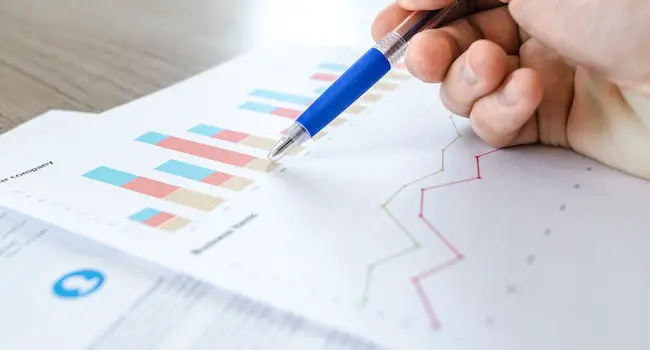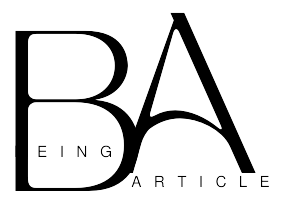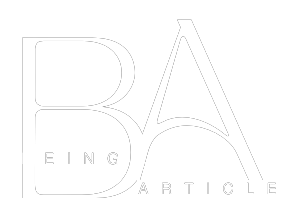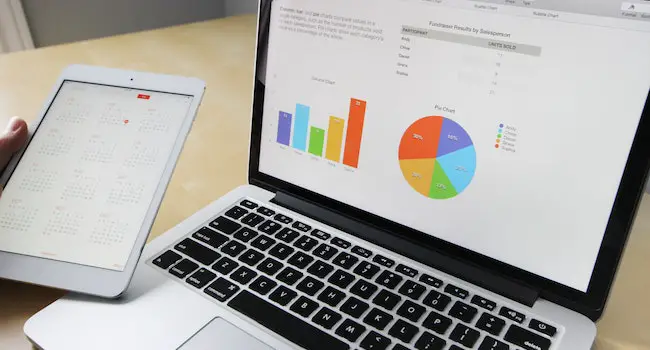How To Read Economic Survey For UPSC?
Economic Survey is an annual report on the Indian economy presented a day before the Union Budget. From 1950-51 it was presented alongside the Budget but de-linked from the Budget in 1964.
The Economic Survey is heavy, so you must take your time. Do not attempt to mug everything, but pick up relevant points directly related to Prelims and Mains.
How to take notes for economy UPSC?
Note-taking is a must-have capability for every UPSC hopeful, specifically for the subject of economics. Economics is a huge subject and taking notes will help you remember and retain key ideas and concepts. Here are some suggestions for taking notes for the economics UPSC:
Understand the Basics
Before you begin taking notes, it is essential to have a solid understanding of the fundamental concepts of economics. You must be well-versed in the terminology, definitions and the fundamentals of economics. This will enable you make effective notes and organize them in a systematic manner.
Use Short Handwriting
Economics UPSC examinations will require you to write lengthy answers. This is why it is important to write well to make it easier to write the answers. It is also advisable to practice handwriting that is shorthand while making notes. Shorthand writing helps you write faster and more effectively, which allows you to write more within a shorter period of time.
Identify Key Concepts
Economics is a complicated topic, and it’s easy to become lost in the complexities. In order to take notes that are effective you must be aware of the fundamental concepts and theories crucial to UPSC. It is important to focus on the most important ideas, concepts and concepts rather than becoming bogged down in the minutiae of details.
Organize Your Notes
It is essential to organize your notes for a productive studying. There are a variety of methods to arrange your notes, like creating diagrams, tables or flowcharts. Additionally, you can make use of bullet points or numbering to make a clear structure of information. Be sure that your notes are simple to follow and read.
Use Examples
The concepts and theories of economics are difficult to grasp without examples. This is why it is essential to make use of examples when taking notes. Examples aid in illustrating the theories and concepts, and make them easier to comprehend. Use real-world examples cases, case studies, or scenarios that are hypothetical to demonstrate the ideas.
Review and Revise
Revision and review of notes is vital for recall and retention. It is important to revisit your notes on a regular basis, perhaps every day, in order for a refresher of your brain. You may also review your notes prior to exams or tests to make sure you’ve retained the material.
Understanding and Reading Economic Survey
A report that gives a broad assessment of a nation’s current economic state, policies, and prospects is known as an economic survey. It covers a wide range of issues, including macroeconomic statistics, employment, inflation, and fiscal and monetary policy. When reading and comprehending an economic survey,
Read It After A Basic Study
The economic Survey is a government document that discusses the economy of India over the past year. It is very important for UPSC candidates as it helps them understand the country’s current economic situation. It also helps students learn about various policy initiatives and government schemes.
To prepare for the UPSC prelims, candidates must read this government document thoroughly. In addition, they need to learn about important concepts in economics.
For example, the economic Survey can help them better understand inflation and GDP. It can also help them learn about fiscal drag and the trade balance.
Moreover, it can give them an insight into the government’s economic policy. It can also help them learn about the current trends in the Indian economy.
In addition to reading the economic Survey, students should also read other books about the subject. For example, Ramesh Singh’s Indian Economy can help them develop a strong theoretical foundation.
Another book that aspirants should read is Shankar Ganesh’s Indian Economy Key Concepts. These books will teach them the key ideas in the Indian economy and how they can be applied to real-world problems.
Once these books are completed, it is time to start preparing for the IAS Exam. In addition to reading the economic Survey, students must solve the previous year’s question papers and see the latest study material to ensure they are ready for the IAS Exam.
The Economic Survey can be challenging since it is a government document with a lot of numerical data. However, if students follow the correct approach, they can successfully prepare for the IAS exam.
A good strategy is to read the economic Survey in 3 separate parts – GS 1, GS 2, and GS 3. This will help them organize their study time and ensure they cover all the important facts and figures relevant to the exam.
After dividing the economic Survey into three sections, students can read each section thoroughly and take notes of important facts. This will help them improve their knowledge of the subject and boost their General Studies Paper III marks.
Read the Preface thoroughly
The Economic Survey is a document that discusses the latest developments in the Indian economy. It also highlights government schemes and policies that have been implemented or are being implemented. It is a very important document for students to study if they want to clear the UPSC Prelims and Mains exam.
This document is prepared by the Economic Division of the Department of Economics Affairs (DEA) under the guidance of the Chief Economic Advisor (CEA). It is released a day before the Union Budget is made public. The Survey provides a comprehensive review of India’s economic performance and the expected growth for the next financial year.
While reading this document, it is important to read the Preface thoroughly. This is because this section summarizes the content and will help you better understand what is contained in this document.
A good preface will give your readers an idea of the subject matter you are covering and why you wrote this book. This is a great way to build credibility for your work. It also allows you to tell your readers why this book differs from others on the same subject.
You may also include a brief explanation of why you decided to write this book and the context that led you to think there was a need for a book on your topic. You can also mention any specific challenges you faced while researching and writing the book.
The Preface is a great place to share important information that will make your book stand out. This can include information about how long it took you to write the book, why it was important for you to write this book and any other details that will make your book interesting to your readers.
Another thing you should do while reading the Preface is to take notes. This will make it easier for you to go back and re-read certain sections later on. It will also help you avoid forgetting the most important information.
Read The Boxes
The Economic Survey of India is a report card of the Indian economy presented annually by the Ministry of Finance. It is submitted to both houses of the Parliament a day before the presentation of the Union Budget. The nation’s economics is analyzed in this document, and trends in infrastructure, employment, money supply, pricing, imports, exports, and foreign exchange reserves are studied.
It is a must-read for UPSC as it thoroughly analyzes the Indian economy and major government policies. It also provides a glimpse of the current and future economic challenges that face the nation.
Hence, GS must understand the Economic Survey and its implications in the Civil Services Examination (CSE) Prelims, Mains, and Interview phases. Almost half of the 15-20 questions asked in the Economic Section of the Prelims are directly related to the Economic Survey of the respective year.
However, reading the whole Economic Survey is a lengthy process and time-consuming. So, preparing only the most important chapters that apply to the CSE syllabus is best.
This strategy can be followed for the Economic Survey, Volume I and II. Chapters like Fiscal Capacity for the 21st Century, The Political economy of India, and Economic growth are very important and provide a detailed insight into the Indian economy.
Another important tip is to make notes of the economic data that is mentioned in the Economic Survey. This will help you answer Economics-based questions in the GS Papers, optional papers, and the Essay paper of the Mains Exam.
In the Mains, the Economic Survey provides insights into issues that can be incorporated into the answers to enrich your writing and fetch good marks. Moreover, it has useful phrases that can be quoted word-by-word in the answers. These can include the “twin balance sheet problem,” “Chakravyuh challenge,” and other impactful words that can be used to bolster your marks.
The Economic Survey is a must-read for the UPSC as it is a forerunner of Indian economics and a great source of information. Moreover, it is very relevant to the Prelims and Mains stages of the Civil Services Exam as it gives insight into the major government initiatives and their implications.
Read The Chapters
The economic Survey is a key source for the UPSC exam as it highlights the government’s policies and gives an insight into the current state of the economy. It also gives a detailed analysis of major government schemes and initiatives.
The Economic Survey is an annual document published by the government. The Chief Economic Advisor often presents it and aims to provide a comprehensive view of the country’s economic situation. It includes a detailed statistical abstract as well.
It also focuses on major economic sectors such as manufacturing, agriculture, services, and finance. It also discusses important policy issues such as inflation, unemployment, and fiscal developments.
This document is essential for the UPSC Civil Services Prelims and Mains Examination as it deals with the current state of the Indian economy. Each year at least 2-3 questions are directly or indirectly asked from it in the Prelims, and this number increases in the Mains.
Students should read the economic Survey every year to get a grip on the current developments in the country’s economy and understand how the government’s policies affect the national economy. They should also read the Union Budget to know how the government plans to implement its policies in the coming fiscal year.
A student should note all the important facts and figures mentioned in the Survey so they can use them in their GS answers. This will help them fetch better marks in their General Studies Paper III.
The economic Survey is divided into 11 chapters. Each chapter has a different focus. For example, chapter one deals with the present scenario’s economy and challenges and opportunities, while chapter two discusses fiscal consolidation and related issues.
Aspirants should start with chapter one and then move on to other chapters. They should read the chapters page-by-page and take notes of the important points. This will ensure that they do not miss out on any important points.
The economic Survey also covers issues such as e-agriculture, direct and indirect subsidies for farmers, PDS, agricultural credit, and the role of technology in agriculture. It also explains the major cropping patterns in different parts of the country and their production constraints. It also outlines the importance of animal rearing and food security.
The Economic Survey is an important document released by the Ministry of Finance every year, which provides a comprehensive analysis of the state of the Indian economy. For UPSC aspirants, reading the Economic Survey is essential, as it covers a wide range of relevant economic topics for the Prelims and Mains exams.
Here Are Some Tips On How To Read The Economic Survey For UPSC:
- Understand the document’s structure: The Economic Survey consists of two parts – Part I provides an overview of the economy. At the same time, Part II delves into specific topics related to the economy. Understanding the document’s structure is important to know which sections are relevant for the UPSC exam.
- Focus on key points: The Economic Survey is a lengthy document, and it is impossible to read everything in detail. Focus on the key points mentioned in the document, such as the state of the economy, major policy initiatives, and analysis of specific economic sectors.
- Take notes: While reading the Economic Survey, take notes of important facts, figures, and concepts. This will help you remember and use the information effectively in the exam.
- Pay attention to graphs and tables: The Economic Survey contains several graphs, tables, and charts that visually represent the data. Pay attention to these visuals, as they can be useful in understanding complex economic concepts.
- Connect with current affairs: The Economic Survey is published in January, covering the economic developments of the previous year. Connect the information mentioned in the document with current affairs to better understand the current economic scenario.
- Practice answer writing: The UPSC exam requires you to write concise answers. Practicing answer writing while reading the Economic Survey will help you express your ideas better and develop a strong understanding of economic concepts.
- Refer to previous year’s papers: To get a sense of the type of questions asked in the UPSC exam related to the Economic Survey, refer to the previous year’s papers. This will give you the information you need to focus on while reading the document.
Reading the Economic Survey is essential to UPSC exam preparation. Focus on key points, take notes, pay attention to graphs and tables, connect with current affairs, practice answer writing, and refer to the previous year’s papers to get the most out of this document. Regular practice lets you develop a strong understanding of economic concepts and perform well in the exam.
FAQ’s
What exactly is the Economic Survey, and what significance does it have for UPSC?
The Ministry of Finance of the Indian Government releases the Economic Survey every year. It offers recommendations for future policy as well as an overview of the Indian economy’s performance over the past year. It covers many topics that are relevant to the exam, including macroeconomics, fiscal policy, and sectoral analysis, making it an important resource for UPSC applicants.
I’m not sure how to read the Economic Survey.
It is ideal to peruse the Financial Study in an organized way, separating it into segments and accepting notes as you go. You should also try to make connections between the various pieces of information and see how they relate to one another and to the Indian economy as a whole. In addition, regular revision is essential for information retention.
If certain parts of the Economic Survey aren’t relevant to the UPSC syllabus, can I skip them?
Even though some parts of the Economic Survey may not be as relevant to the UPSC syllabus as others, it’s still important to know everything in the document. You’ll have a better understanding of the Indian economy as a result, which is important for the UPSC exam.
How can I enhance my reading of the Economic Survey by utilizing any additional resources?
To get a better understanding of the Indian economy, you can use additional resources like newspapers, magazines, and online portals in addition to reading the Economic Survey. The debates and issues covered in the Economic Survey can be analyzed and commented upon using these resources.
How can I prepare for the UPSC exam using the data from the Economic Survey?
In the UPSC exam, you can use the data from the Economic Survey to answer questions about the Indian economy. It can also be used to learn more about India’s economic and social problems, which is important for the General Studies papers. Additionally, the Economic Survey’s policy recommendations can provide useful insights into the government’s priorities and future plans.





















